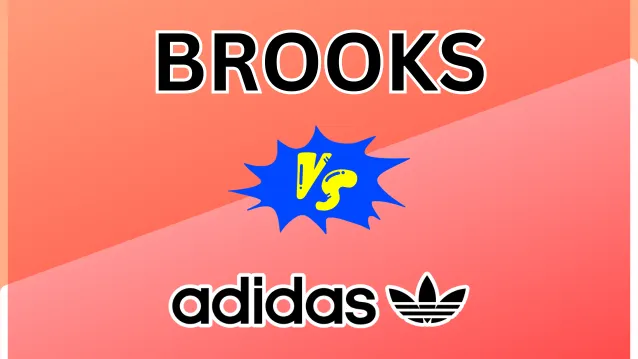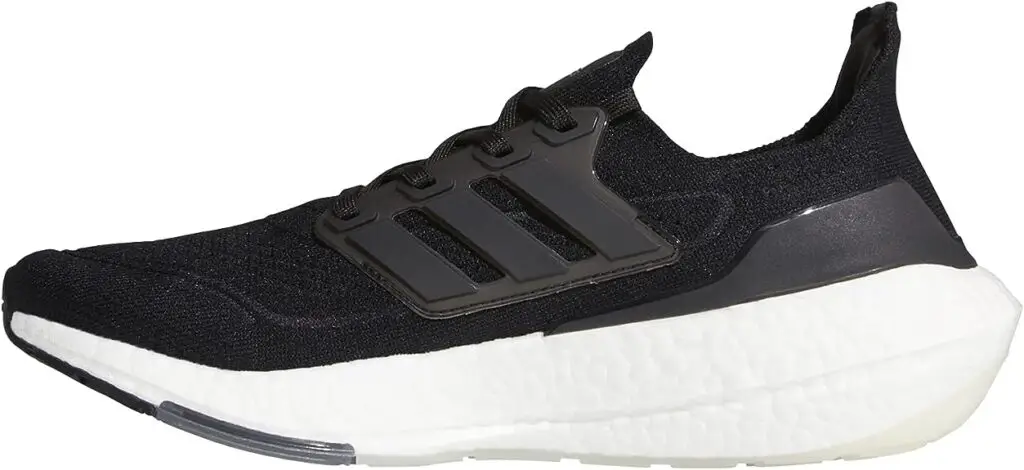When it comes to running shoes, two brands stand out from the pack – Brooks and Adidas. Both companies have been making quality athletic shoes for over 100 years.
But how do they actually compare when you dig into the details? I evaluated the key factors to determine whether Brooks or Adidas came out on top.
Comparison Table Between Brooks And Adidas:
| Category | Brooks | adidas |
|---|---|---|
| Founded | 1914 | 1924 |
| Comfort & Fit | Known for exceptional comfort and support | Comfortable with innovative technologies like Boost |
| Color Options | Wide range of color options | Even wider range of colors and styles |
| Durability | Durable but some models wear faster than others | Also quite durable, focus on high-quality materials |
| Performance | Innovative technologies for excellent performance | Just as innovative, with tech like Boost and Primeknit |
| Design & Style | More conservative, traditional athletic styles | Very stylish and athleisure-focused |
| Popularity | Popular but less buzz than top brands | Extremely popular, one of the most-recognizable brands |
| Best Seller | Adrenaline GTS | Ultraboost running shoe |
Brooks Overview
Brooks running shoes originated in 1914 in Seattle, Washington when the Brooks Shoe Company was founded. Though it started as a specialty shoe brand, Brooks eventually pivoted to focus on athletic and performance footwear in the 1970s.
Some of the long-running iconic features of Brooks shoes include:
- BioMoGo DNA: An adaptive midsole foam that provides soft landings followed by firm toe-offs for propulsion.
- GuideRails: An engineered support system around the midsole to limit excess pronation or inward foot rolling.
- Flextra: Outsole rubber strategically placed for flexibility where the foot needs to move.
- Ideal Pressure Zones: Designated cushioned zones on the outsole positioned under important areas.
- Adjustable saddle: A structured component that customizes midfoot support and fit.
- HydroFlow: Shock-absorbing cushioning units in the midsole for plush softness.
In addition to catering to regular neutral runners, Brooks offers stability, trail, walking, and casual shoes. Some of their most popular models through the years include the Ghost, Adrenaline GTS, Glycerin, and Ravenna.
With over 100 years of experience, Brooks uses proven technologies and innovations to create high-performance shoes suited for runners of all types.
Adidas Overview:
Adolf “Adi” Dassler founded Adidas in 1924 in Herzogenaurach, Germany, establishing one of the most recognized and iconic athletic brands worldwide.
Adidas designs performance-driven athletic shoes for running, training, and sports.
Breakthrough innovations like responsive Boost foam midsoles and adaptive Primeknit uppers power popular models like the best-selling UltraBoost.
Adidas maintains a commitment to developing technologies like Formotion and Torsion System that maximize human potential through rigorous athlete testing.
From vintage streetwear classics like the iconic Superstar to new trends like the NMD_R1, Adidas’ sporty style transcends demographics with universal appeal.
With timeless 3-Stripe branding and silhouettes optimized for movement, Adidas continues pushing boundaries while staying true to its roots in athletic performance.
Major Differences Between the Brands
1) Comfort and Fit
When it comes to comfort and fit, both Brooks and Adidas make shoes that most runners find very comfortable. However, Brooks has built their entire reputation specifically on the exceptional comfort their shoes provide.
They carefully design each element like the upper, midsole, and arch support to hug the foot and eliminate irritation. adidas still offers a comfortable ride, but their shoes tend to prioritize energetic bounce and responsiveness over plush softness. Those wanting a more pillow-like feel may prefer Brooks.
2) Durability and Performance
Both brands create high-quality and durable shoes with innovative technologies to aid performance. Brooks uses materials like ballistic rock shields in high-wear areas along with their cushioning systems to maintain bounce.
adidas performance shoes also hold up well over miles, helped by adiWear rubber in their outsoles. For durability, it’s nearly a toss-up between the two brands, however, Adidas may have a slight edge in utilizing cutting-edge performance technologies like Boost midsoles. The energy return beats what Brooks currently offers.
3) Price
When comparing prices between Brooks and Adidas running shoes, Brooks tends to be more affordable, with models starting around $100 while Adidas leans closer to $120 and beyond.
However, it depends greatly on which specific shoe you select from their many options. Both brands use premium materials and technologies to justify their pricing.
For the most part, Brooks favors value and access while Adidas focuses more on advanced features and brand prestige to command higher prices at the extreme end for unique styles. Either can suit a range of budgets.
4) Design and Style
These two brands definitely differentiate when it comes to design aesthetics. Brooks shoes have a practical, understated look with more neutral tones and traditional running shoe shapes.
They prioritize function over flashy looks. Meanwhile, Adidas sportswear embraces a more fashion-forward style with colorful prints, patterns, and silhouettes made to demand attention well beyond the gym.
Under the Adidas branding, running shoes take on lifestyle elements for all-day wear, which attracts runners who also want shoes that express personal flair.
5) Popularity
While Brooks has a devout following amongst the running community, there’s no competition with Adidas’ global popularity and familiar three-stripe logo.
adidas has risen to become the #2 sportswear company worldwide, while Brooks remains a smaller niche brand just for runners.
Adidas’ lifestyle branding through influencer campaigns and pop culture connections makes them one of the most coveted names across all audiences. They hold mass appeal, especially among younger sneakerheads that Brooks doesn’t match in sheer hype.
6) Target Market
Brooks and Adidas running shoes cater to slightly different target markets. As the more specialist brand, Brooks designs their shoes exclusively with serious runners in mind to give them an optimized experience.
Their target demographic zones in on regular runners logging higher weekly mileage. adidas still works to serve athletes but also seeks to connect with a wider segment of casual wearers and make bold fashion statements. Their shoes have mass consumer appeal beyond just sports performance.
Final Verdict
In the Brooks vs Adidas debate, Brooks claims the lead when it comes to pure running specialty. They pour all focus into comfort, support, and responsiveness to give runners the best mileage day after day.
However, Adidas has an edge as a sporting goods powerhouse that also injects style and clout. Their shoes handle runs with ease but also thrive as streetwear off the clock.
So choose Brooks if you’re all about that runner life, but go Adidas if you want attitude both on and off the track. Ultimately you can’t go wrong as both labels deliver quality and innovation. The right choice comes down to personal priorities.



